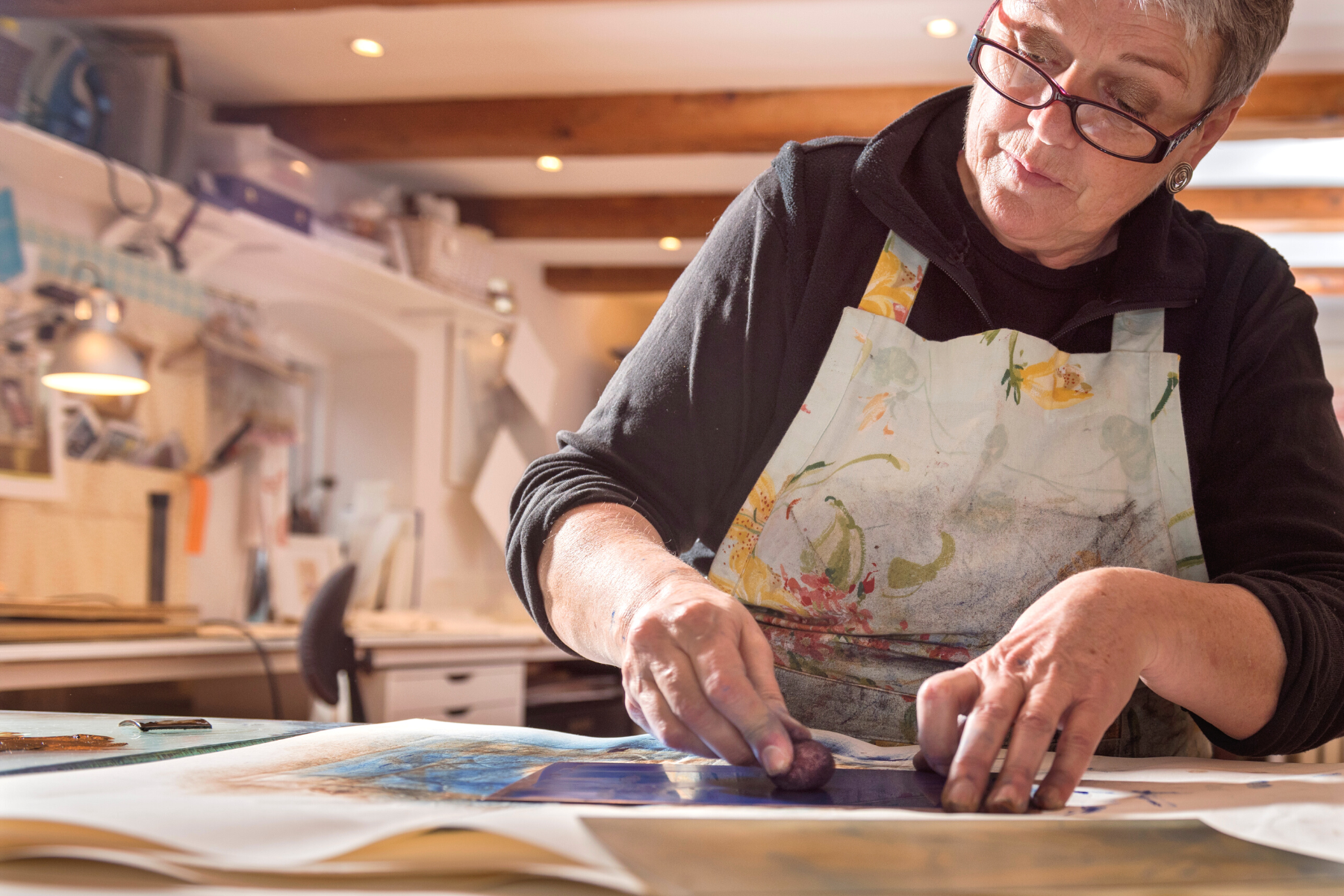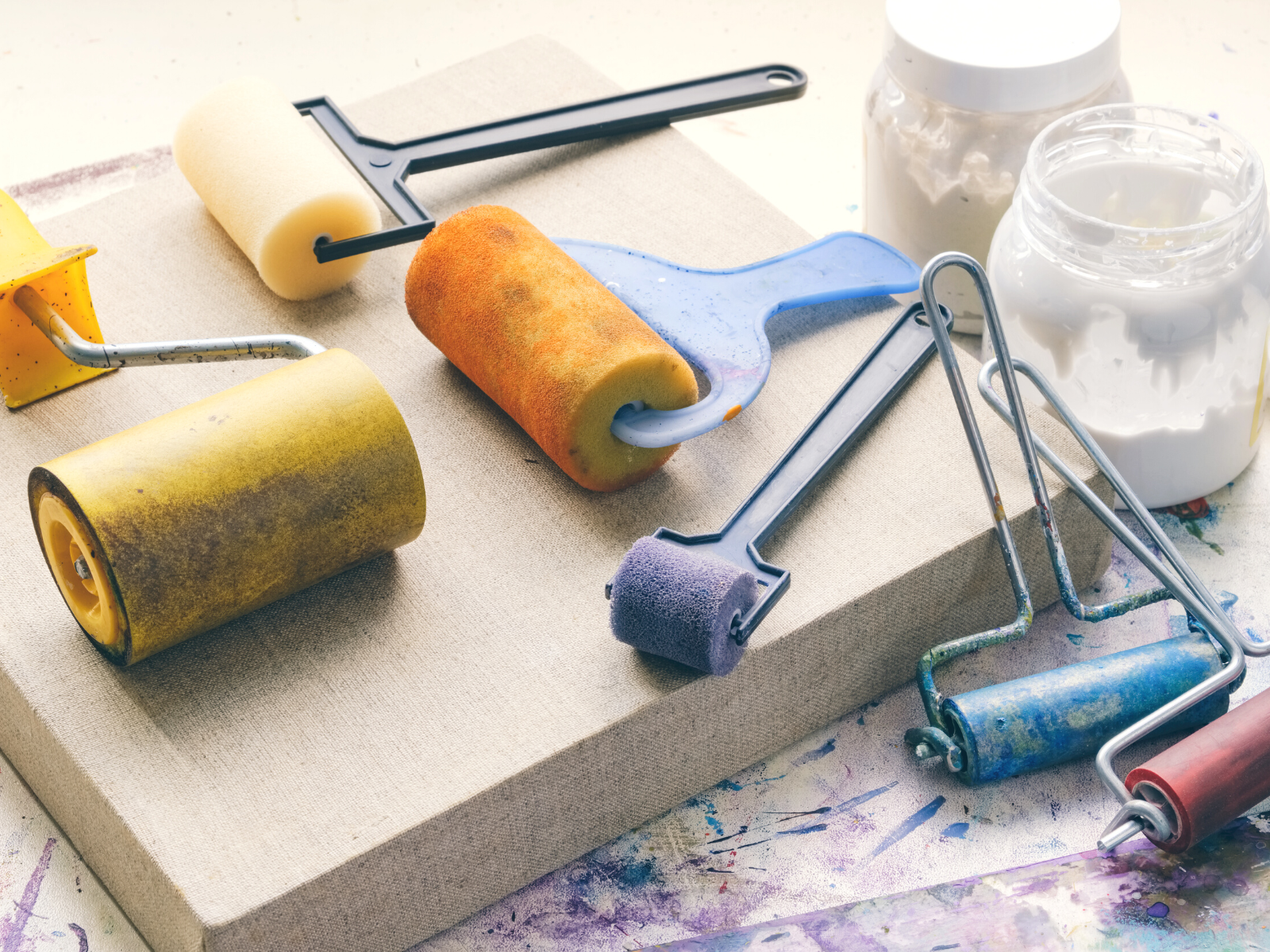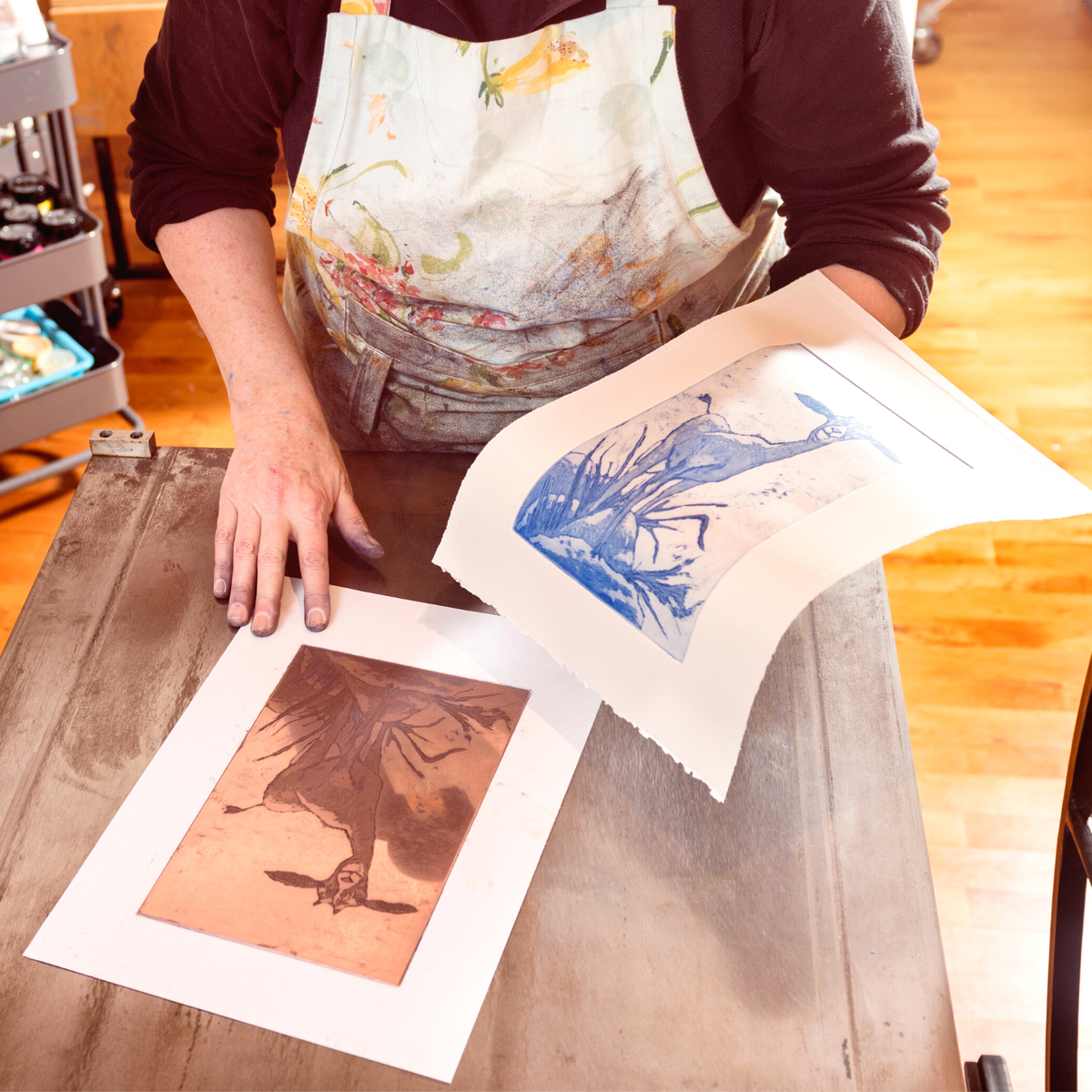Have you ever seen a beautifully designed print and wondered how on earth the artist captured that intricate image on paper?
Or maybe you've thrown around the idea of trying printmaking yourself but felt intimidated by all the big printmaking studio machines and technical terms?
If you've ever admired prints hanging in a museum and wondered how they were made, you're not alone.
The techniques of creating multiple unique artworks from a single surface have mystified artists and art lovers for centuries.
Allow me to introduce you to the wonderful world of printmaking—the art of creating art in multiples!
While it may seem almost like magic to be able to reproduce an image again and again, the basic techniques used in printmaking are actually quite simple.
Underneath the mystique of old masters and editioned works lies an accessible artistic process that just about anyone can try.
But let me tell you a secret—printmaking is way more achievable than you might assume.
Whether you're a complete printmaking newbie or have been dabbling in the medium for years, I'm here to break down the basic steps in some of the most popular print techniques in an engaging, easy to understand way.
By the end of this post, you'll be ready to start unlocking your own printing potential and unleash your inner artist through this multifaceted medium.
So, what are you waiting for?
Let's dig into the foundations of printmaking!
Key Takeaways:
- Understand the fundamental steps involved in the printmaking process.
- Learn about the different techniques and materials used in creating prints.
- Gain insights into how artists can replicate their work while maintaining the essence of an original print.
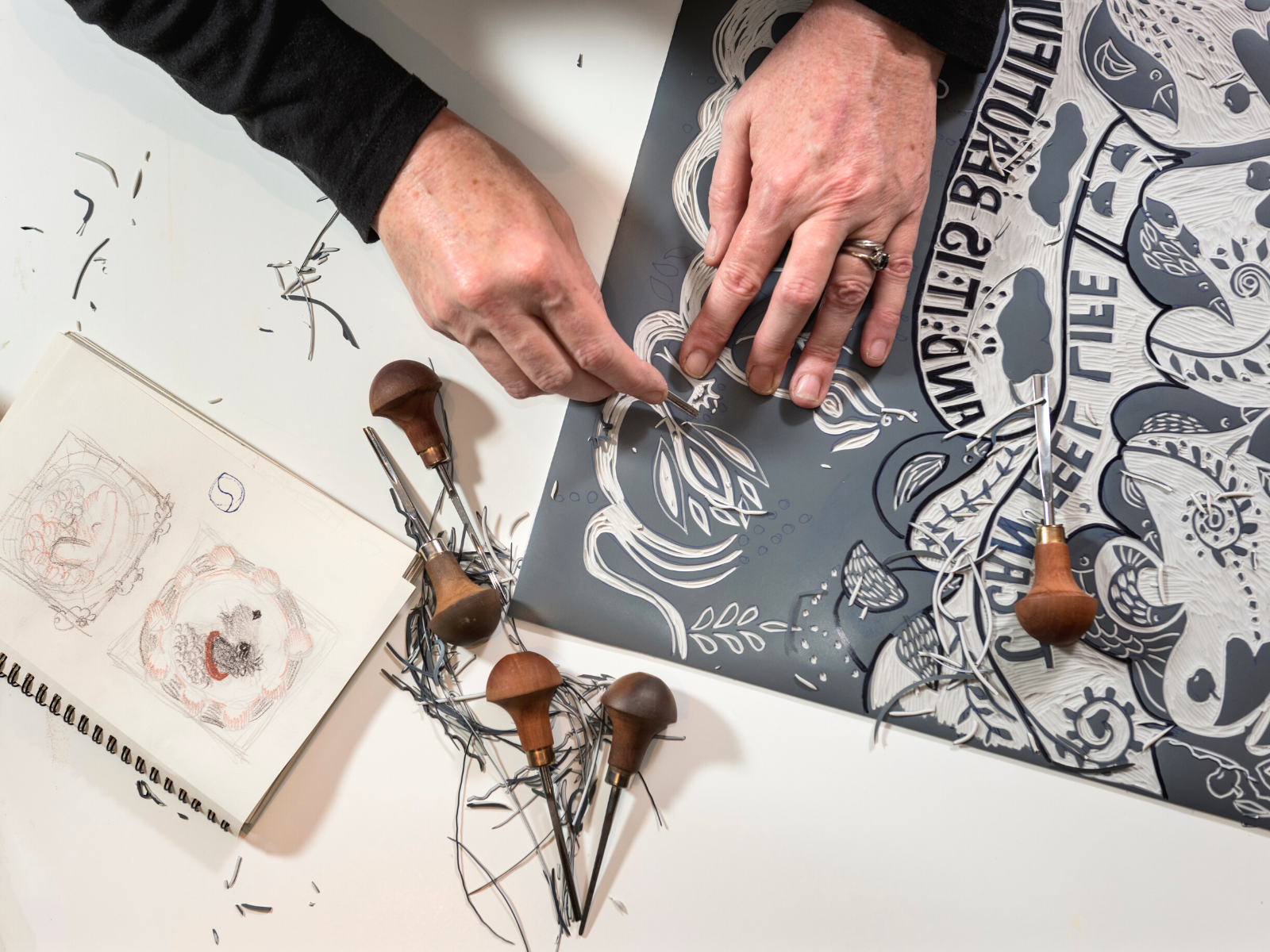
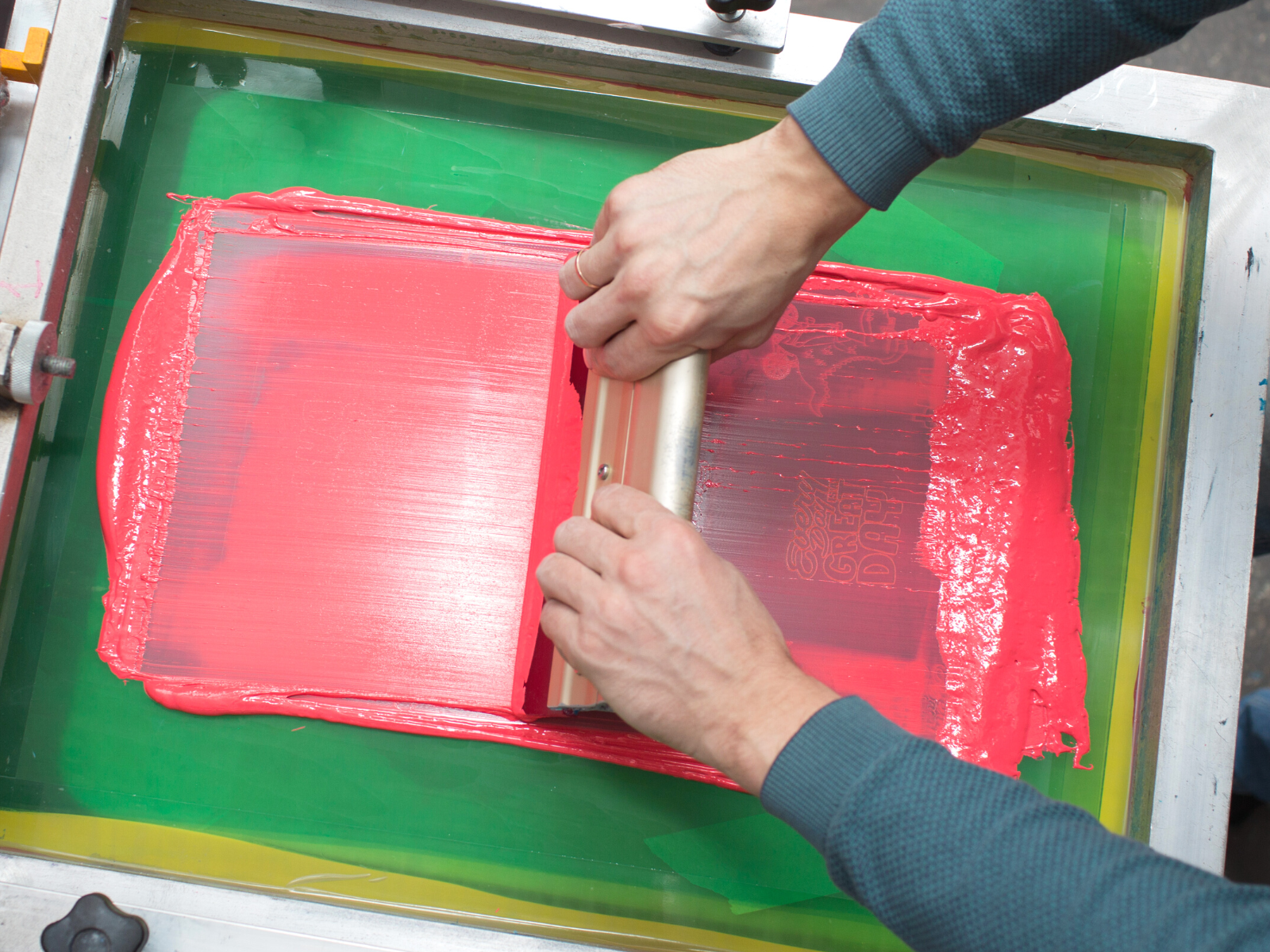
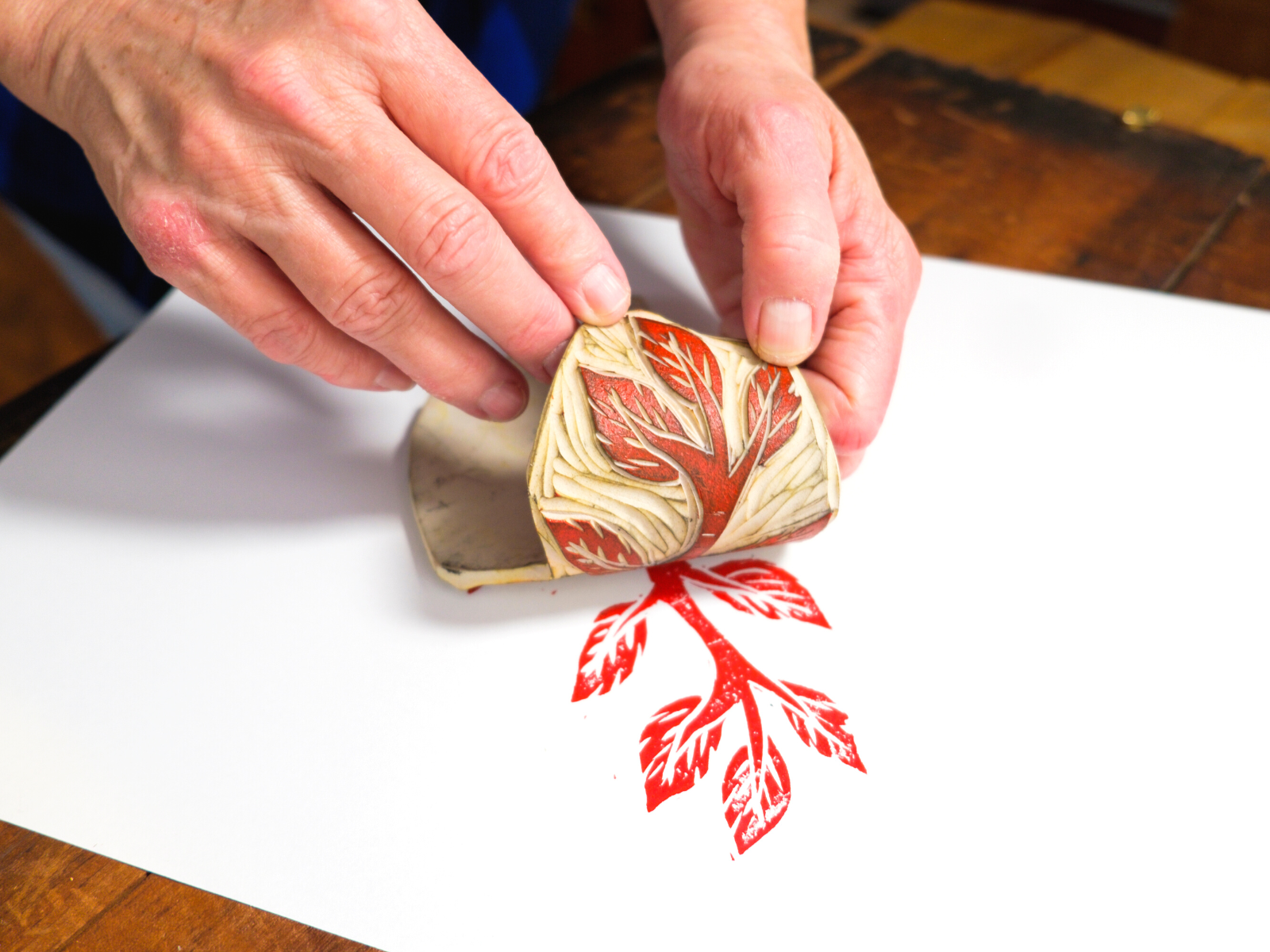
Printmaking 101: The Basics
Printmaking is an art form that has captivated artists and audiences alike for centuries.
It is a process that allows for the creation of artworks through the transfer of ink from a printing surface to paper or other materials.
This process can be done by hand or with the aid of a printing press.
The basic steps involved in printmaking are similar across different techniques, but the tools and materials used may vary.
The Genesis of a Print: Preparing the Printing Surface
The journey of creating a print begins with the preparation of the printing surface.
This could be a metal plate, wood block, linoleum block, or any flat surface that can be carved or treated to hold ink.
In traditional printmaking techniques, such as woodblock printing or etching, the surface is meticulously prepared to ensure that it will accurately transfer the desired image onto the paper.
For instance, in relief printmaking, artists carve into a wood block or linoleum block, creating a raised surface where the ink clings.
The negative space, or the areas that are carved away, will not hold ink and thus will not transfer onto the paper.
This preparation is crucial as it sets the stage for the resulting print.
Etching and Carving: The Artistic Process
Once the printing surface is ready, artists begin the artistic process of etching or carving their design.
In etching, a copper plate is coated with a thin layer of acid-resistant wax or varnish.
The artist then draws directly onto the plate with an etching needle, exposing the metal.
When the plate is submerged in an acid bath, the exposed areas are etched into the metal plate, creating lines and textures.
In relief printing, such as woodcut or linoleum block printing, the artist carves the design into the material, creating a raised surface for the ink to adhere to.
The carved-out areas represent the negative space and will not print.
This step requires precision and artistic skill, as the carved design will be mirrored in the finished print.
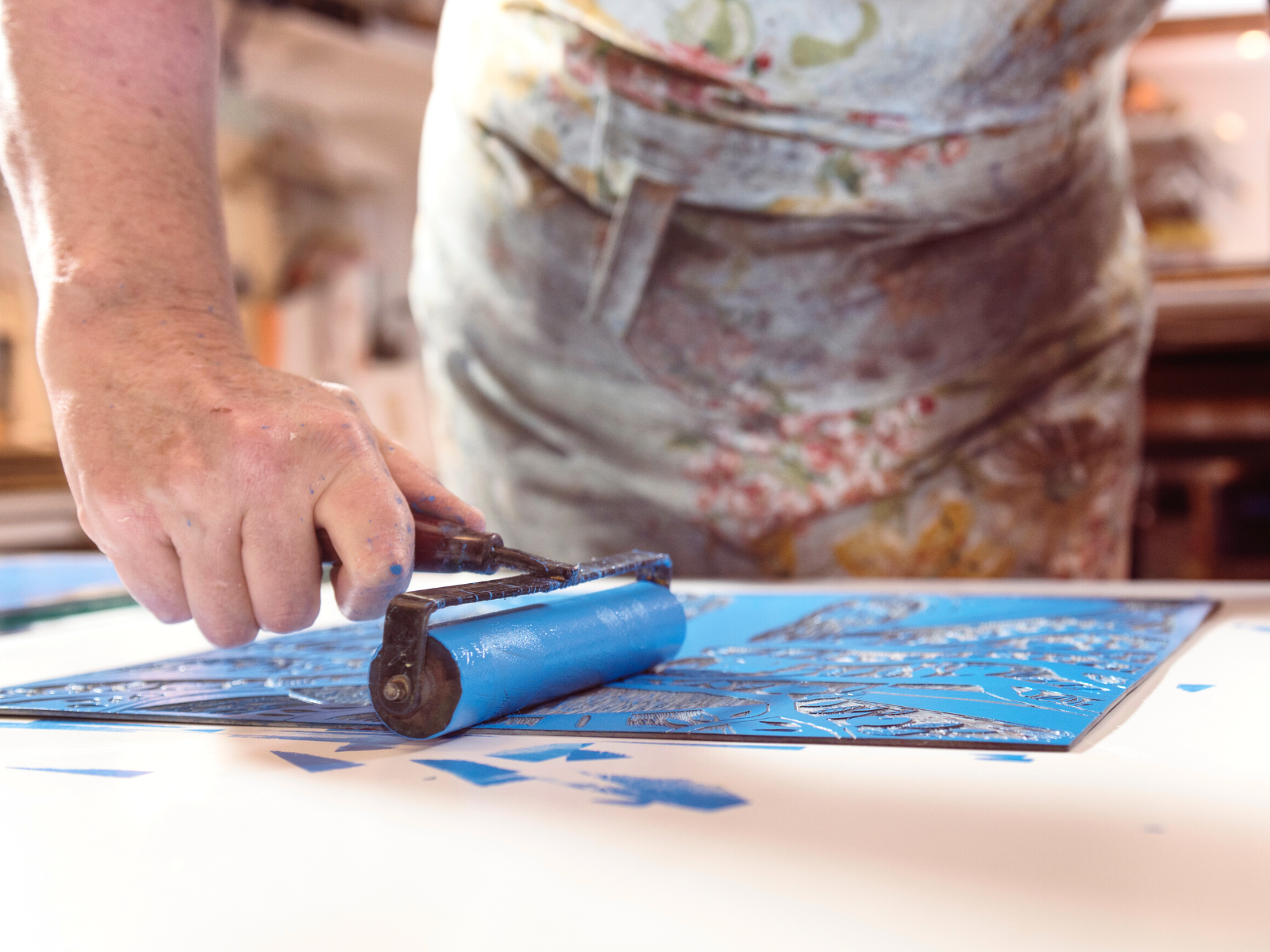

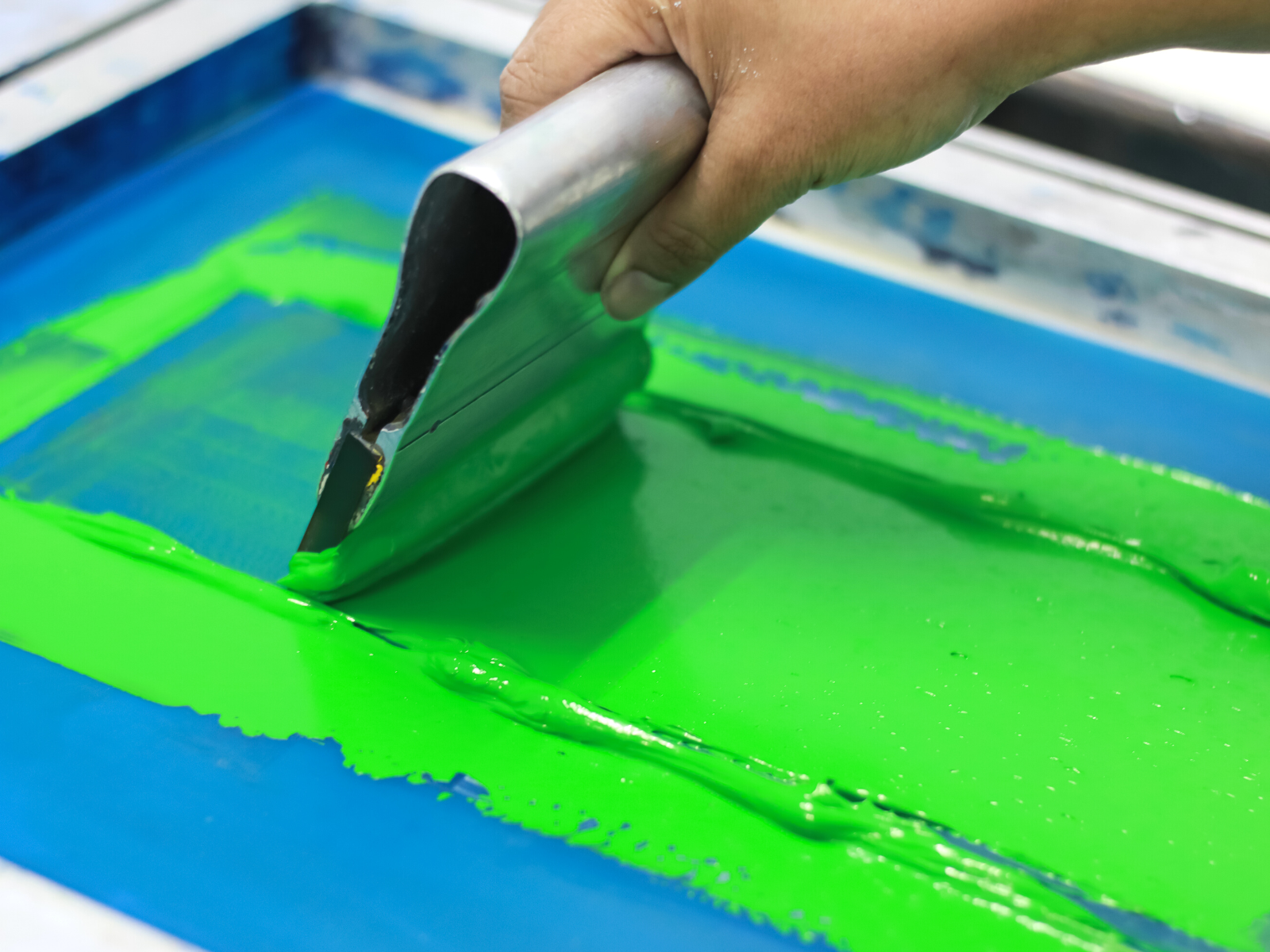
Inking the Plate: A Delicate Balance
Inking is a critical step in the printmaking process.
The artist applies ink to the prepared surface using rollers or dabbers, ensuring a thin layer of ink covers the raised or etched areas.
In relief printmaking, the ink sits on the raised surface, while in intaglio techniques like etching, the ink is pushed into the recessed lines.
The inking must be done carefully to ensure that the ink clings only to the intended areas.
For example, in etching, the surface is often wiped clean, leaving ink only in the etched lines.
This delicate balance between inked and non-inked areas is what defines the clarity and contrast in the finished print.
Pressing Onto the Paper: The Moment of Creation
After inking, the printing surface is brought into contact with damp paper.
The combination of pressure and moisture allows the ink to transfer onto the paper.
This can be done manually by rubbing the back of the paper with a spoon or similar tool, or with the help of a printing press.
The printing press exerts uniform pressure across the printing surface, ensuring that the ink is transferred evenly.
The etching press, roller press, or screen printing apparatus are all variations of the printing press, each suited to different printmaking techniques.
The resulting print is often a mirror image of the design on the printing surface.
Layering Colors: The Complexity of Multiple Blocks
Many prints incorporate additional colors, which can be applied in the same way as the initial layer.
In traditional printmaking techniques, this often involves using a separate block or plate for each color.
The artist must align each layer precisely, a process known as registration, to ensure that the colors combine correctly on the final print.
For example, in woodblock printing, separate blocks may be carved for each color, and each block is inked and pressed onto the paper in succession.
The precision of this process is what allows for the creation of complex, multi-colored prints.
The Final Touches: Quality and Editions
After printing, the artist examines the prints for quality and consistency.
Any prints that do not meet the artist's standards are typically discarded.
The remaining prints are then numbered and signed.
This numbering indicates the print's place in the edition, which is a set of prints made from the same surface.
The concept of an edition is central to printmaking, as it allows artists to create multiple copies of their work.
However, each print is still considered an original print, as it is not a reproduction but rather a unique piece created through the printmaking process.
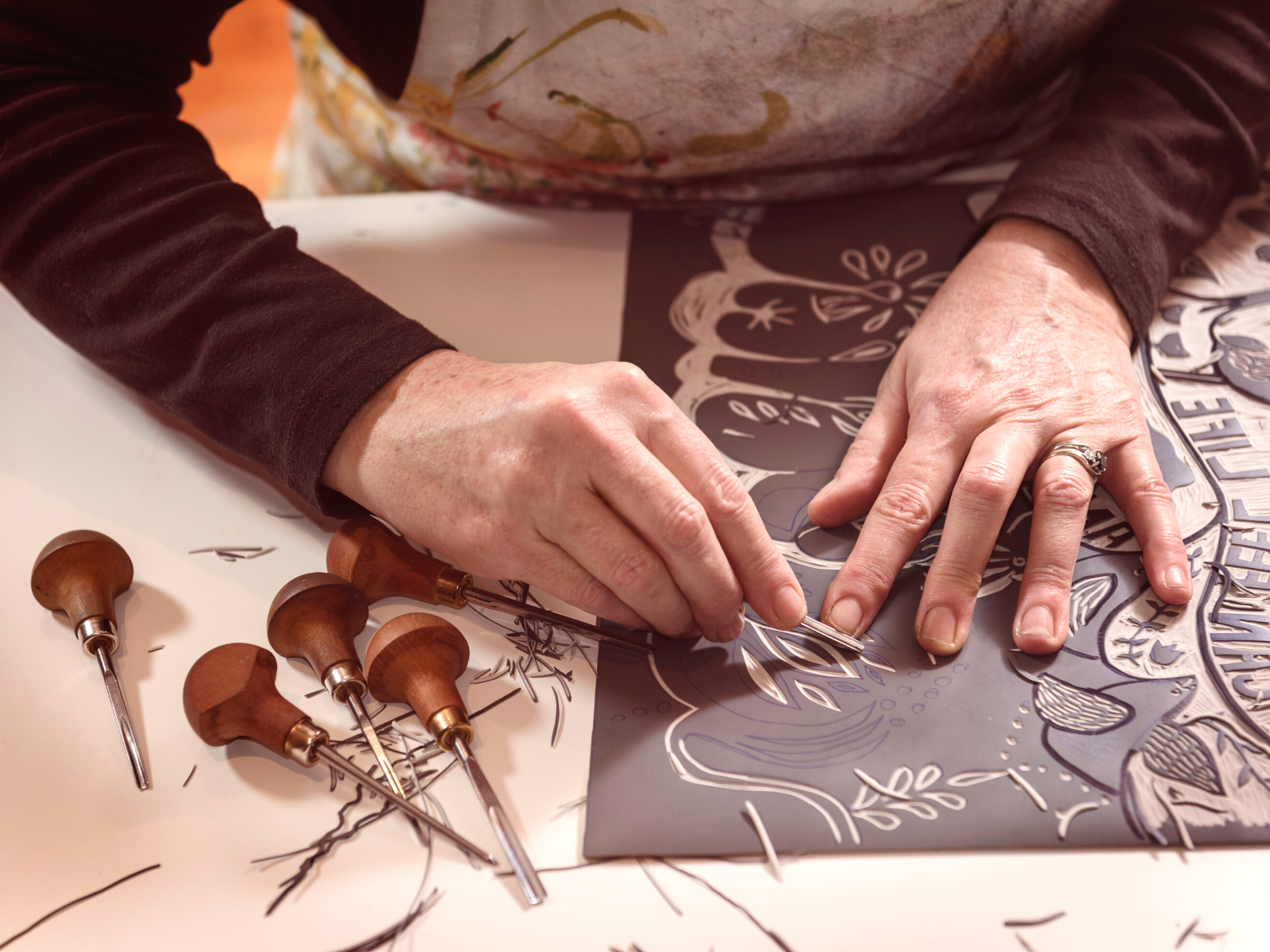
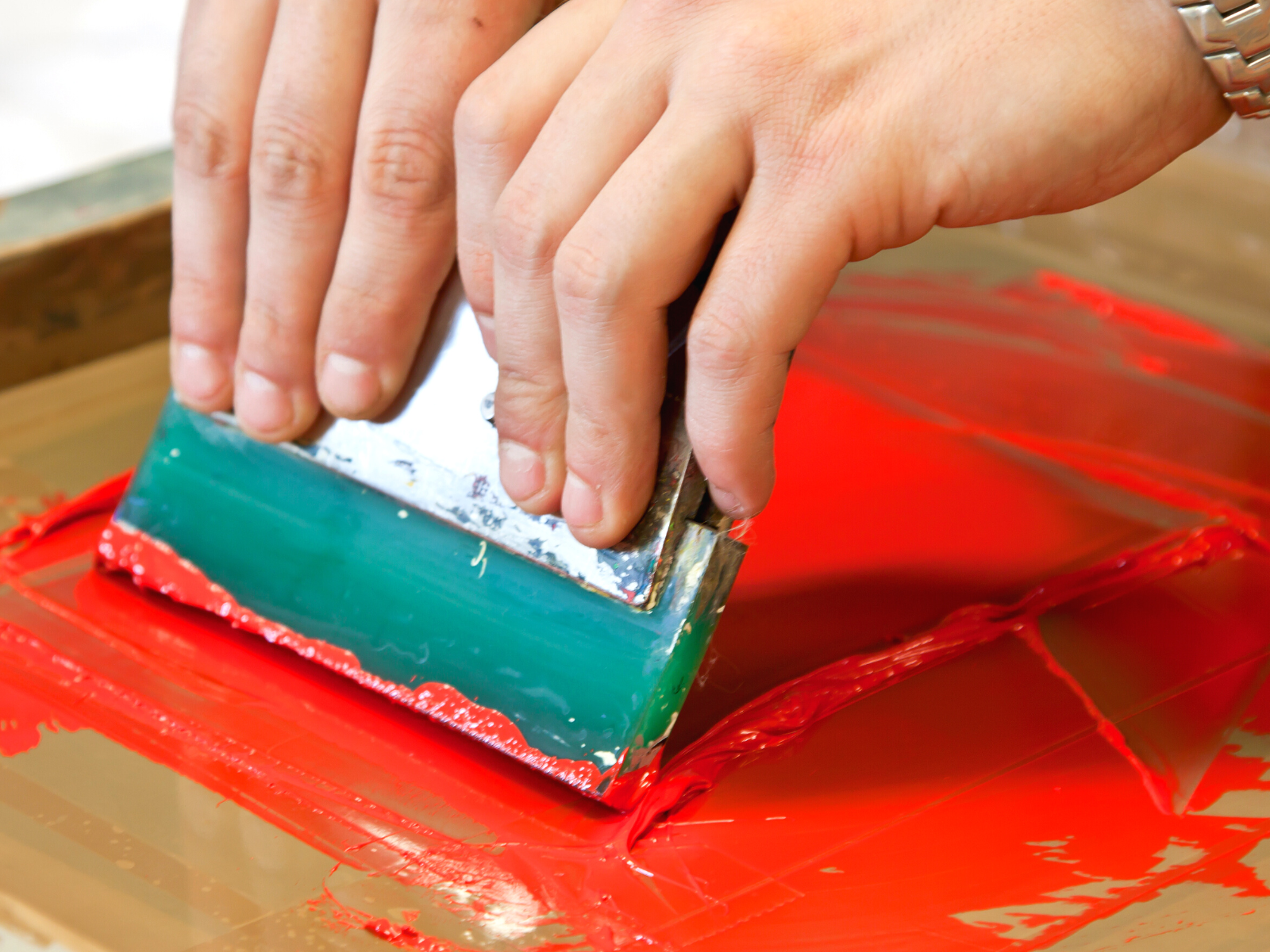

Displaying the Work: From Studio to Art Gallery
Once the prints are completed and dried, they are ready for display.
Artists may choose to present their work in an art gallery, where the public can view and purchase the prints.
The way prints are displayed can vary, with some artists choosing to frame their work, while others may present the prints in a portfolio.
The presentation is an important aspect of printmaking, as it allows the audience to fully appreciate the detail and craftsmanship that goes into each print.
It also provides an opportunity for artists to sell their work and gain recognition within the art community.
Versatility of Surfaces: Beyond Paper
The realm of printmaking is not confined to the traditional canvas of paper; it extends to a myriad of surfaces, each offering a unique texture and finish.
Smooth surface options such as fabric and glass have become increasingly popular among artists seeking to push the boundaries of this art form.
Fabric, with its woven texture, can absorb ink differently, resulting in prints with a soft, organic feel.
Glass, on the other hand, requires a delicate touch, as the non-porous surface interacts with the ink in a way that can either enhance or obscure the fine details of the print.
In exploring various techniques, artists have also turned to less conventional materials such as metal, wood, and even plastic.
Each material introduces its own set of challenges and rewards, demanding a nuanced approach to the printmaking technique employed.
Metal sheets can be etched to create intricate designs, while wood surfaces are often used for relief print methods, where the raised areas leave a bold impression.
Plastic, with its smooth and malleable nature, has given rise to new forms of stencil methods, allowing for crisp, repeatable patterns that maintain the integrity of one image across multiple prints.
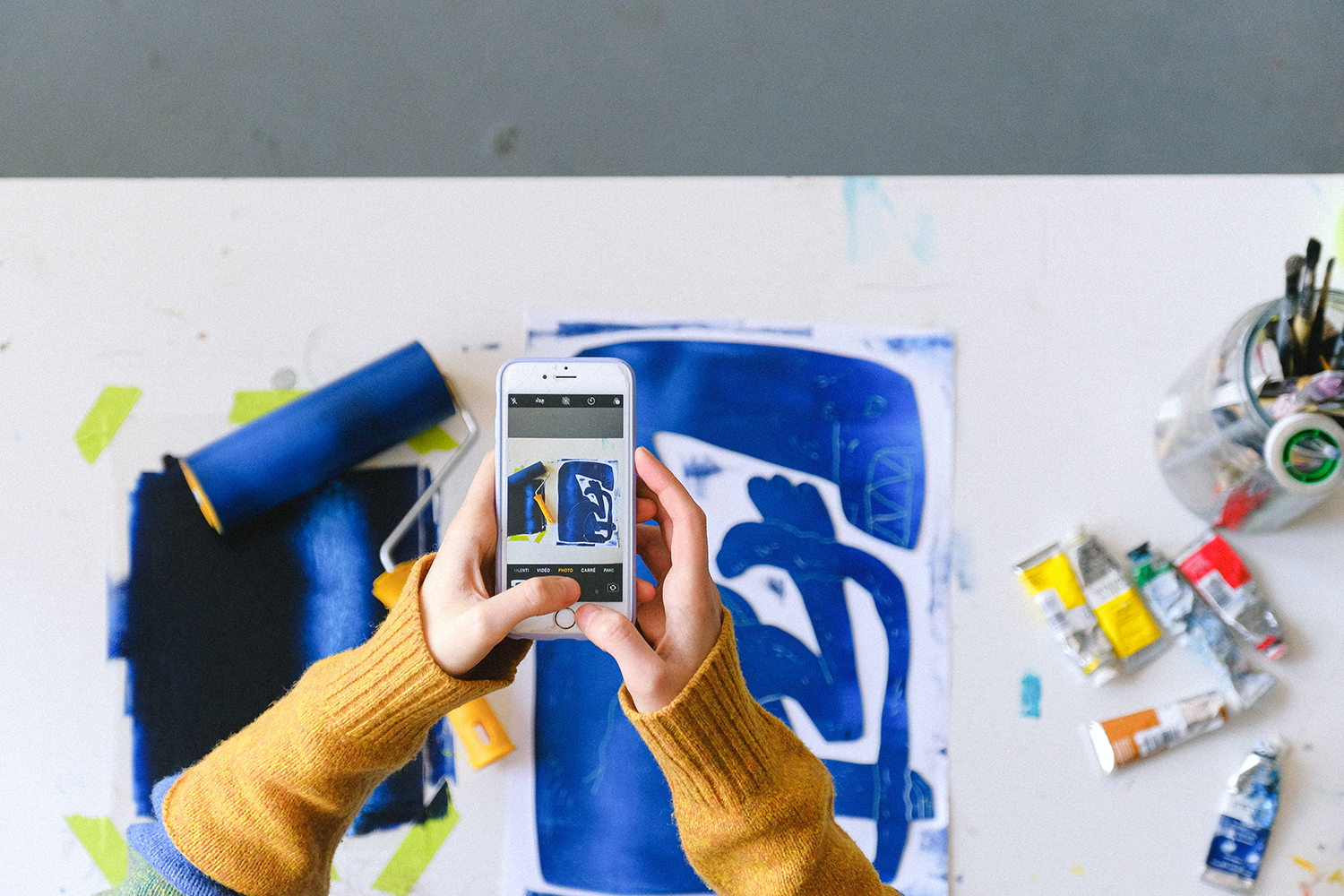
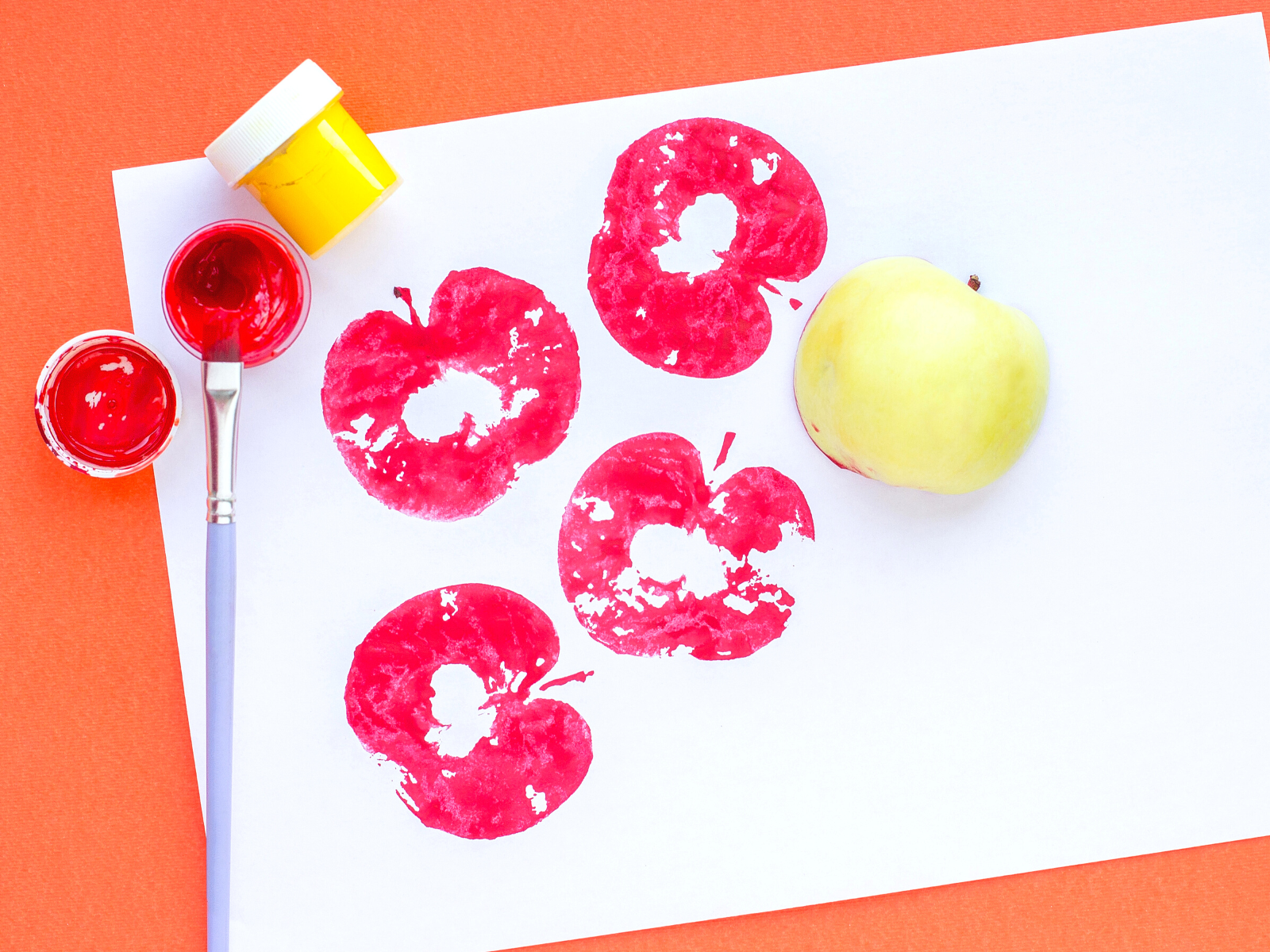
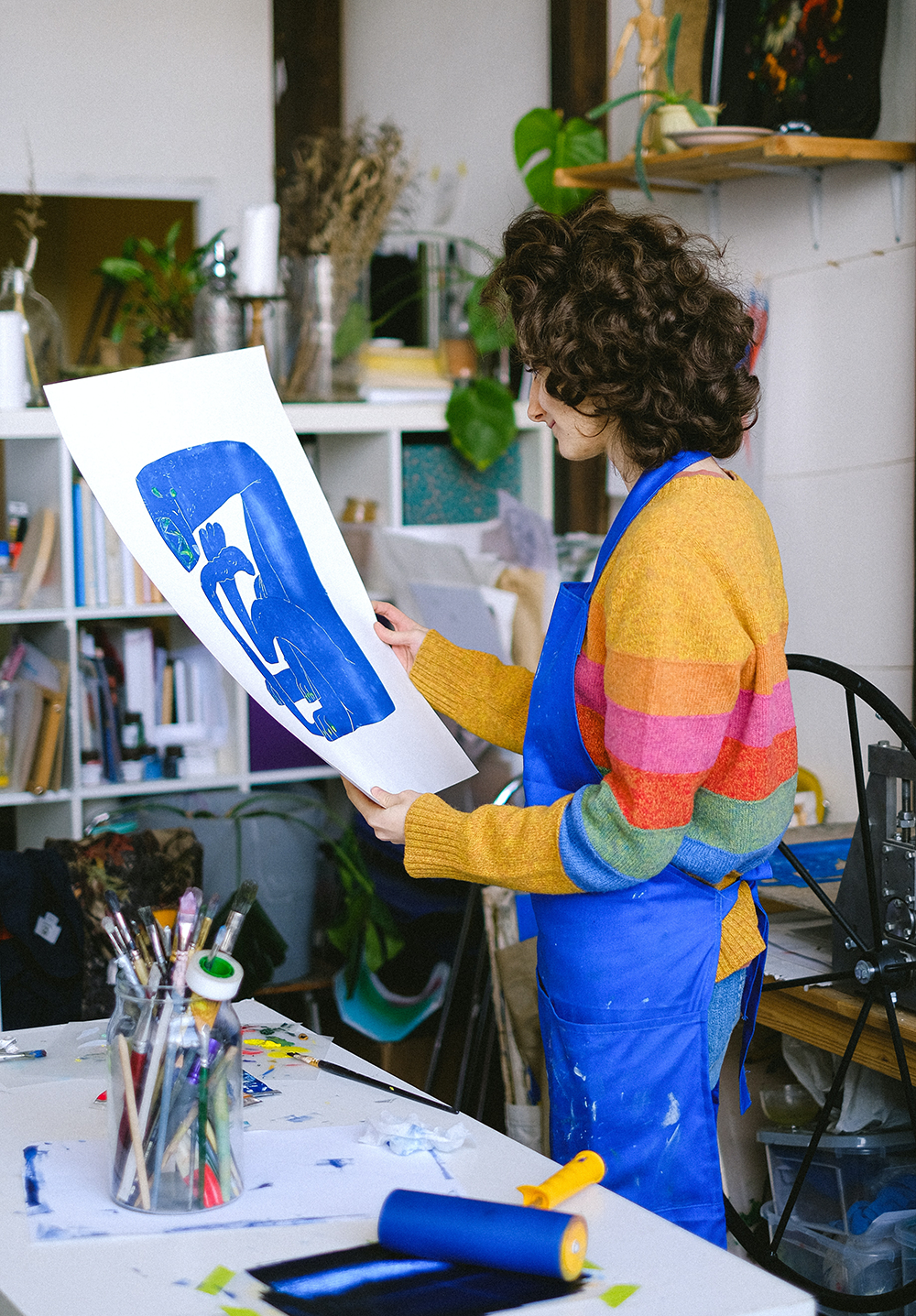
Evolution of Printmaking: Modern Techniques and Materials
While traditional printmaking techniques continue to be practiced, the art form has also evolved to incorporate modern methods and materials.
Screen printing, lithography, and digital printmaking are just a few examples of how artists are pushing the boundaries of what can be achieved with printmaking.
These modern techniques often involve new types of printing surfaces, inks, and even digital tools.
However, the basic steps of the printmaking process remain the same, with artists still needing to prepare a surface, apply ink, and transfer the image onto paper or other materials.
The Role of Technology in Contemporary Printmaking
As technology advances, so does the field of printmaking, with digital tools opening up a new frontier for artists.
The standard procedure of creating prints has been revolutionized by the advent of digital printing, where images can be drawn directly onto a computer and printed with precision on a variety of substrates.
This method has democratized the art form, making it more accessible to create multiple editions of a work without the need for many etchings or physical plates.
The precision of digital printing also ensures that each print in an edition is virtually identical, maintaining a consistent quality throughout.
Moreover, the integration of digital techniques with traditional printmaking techniques has given rise to hybrid forms of art.
Artists can now combine engraving with digital manipulation, or use laser cutters in place of manual carving tools.
The use of movable type has also seen a resurgence, blending with digital typography to create prints that are both nostalgic and modern.
These technological advancements have not only expanded the possibilities of what can be created but have also challenged the very definition of printmaking as an art form.
The Endless Possibilities of Printmaking
The beauty of printmaking is its versatility and accessibility, allowing artists to create unique works that can be replicated again and again.
Printmaking is a complex and rewarding artistic medium that involves several basic steps: preparing the printing surface, etching or carving the design, inking the plate, pressing onto the paper, layering colors, and finalizing the edition.
Each step requires precision and skill, and the choice of technique and materials can greatly affect the finished print.
From the traditional wood engravings to modern screen prints, the art of printmaking continues to thrive, offering endless possibilities for artistic expression.
Each technique and material brings with it a new set of challenges and rewards, making printmaking an ever-evolving art form.
Whether you're drawn to the traditional techniques or are eager to explore more modern methods, printmaking offers endless possibilities for artistic expression.
So don't be intimidated by the old masters or editioned works – grab some materials and start unlocking your own printing potential!
Let's unleash our creativity and dive into the world of printmaking; you never know what masterpieces you might create!
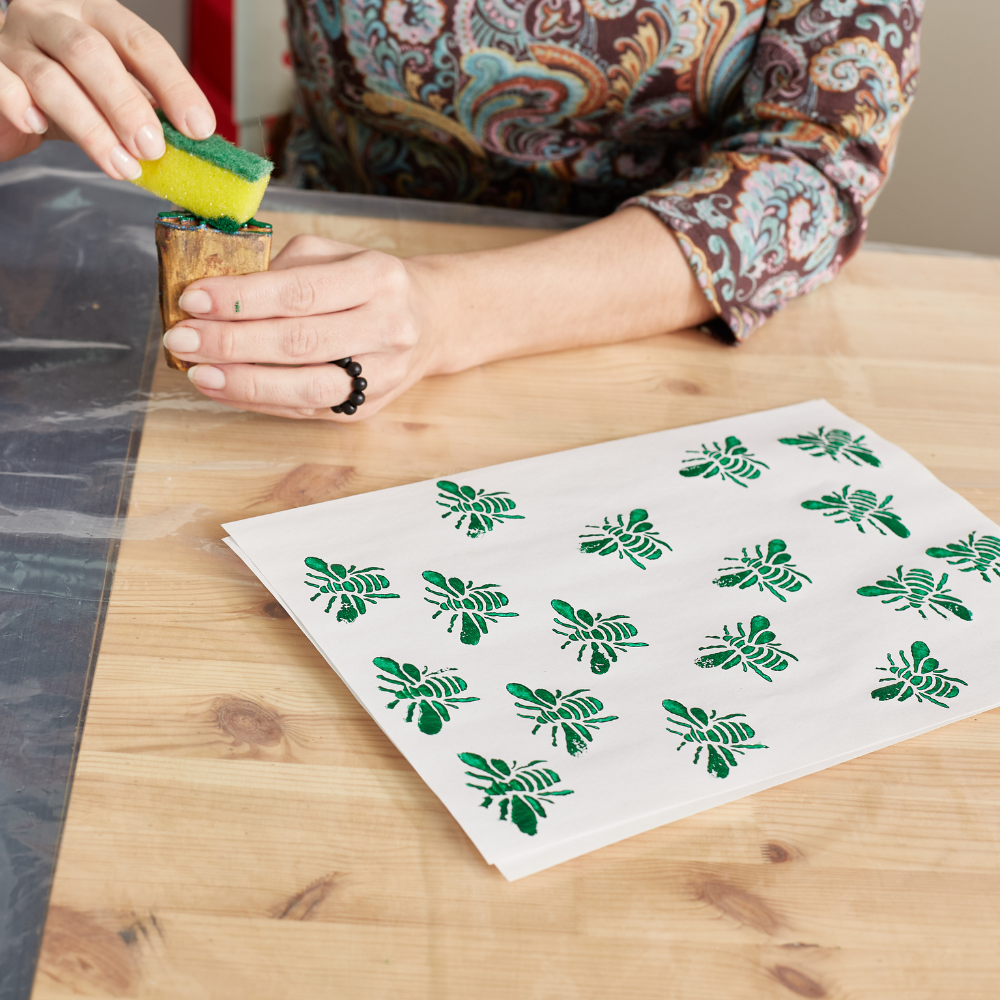
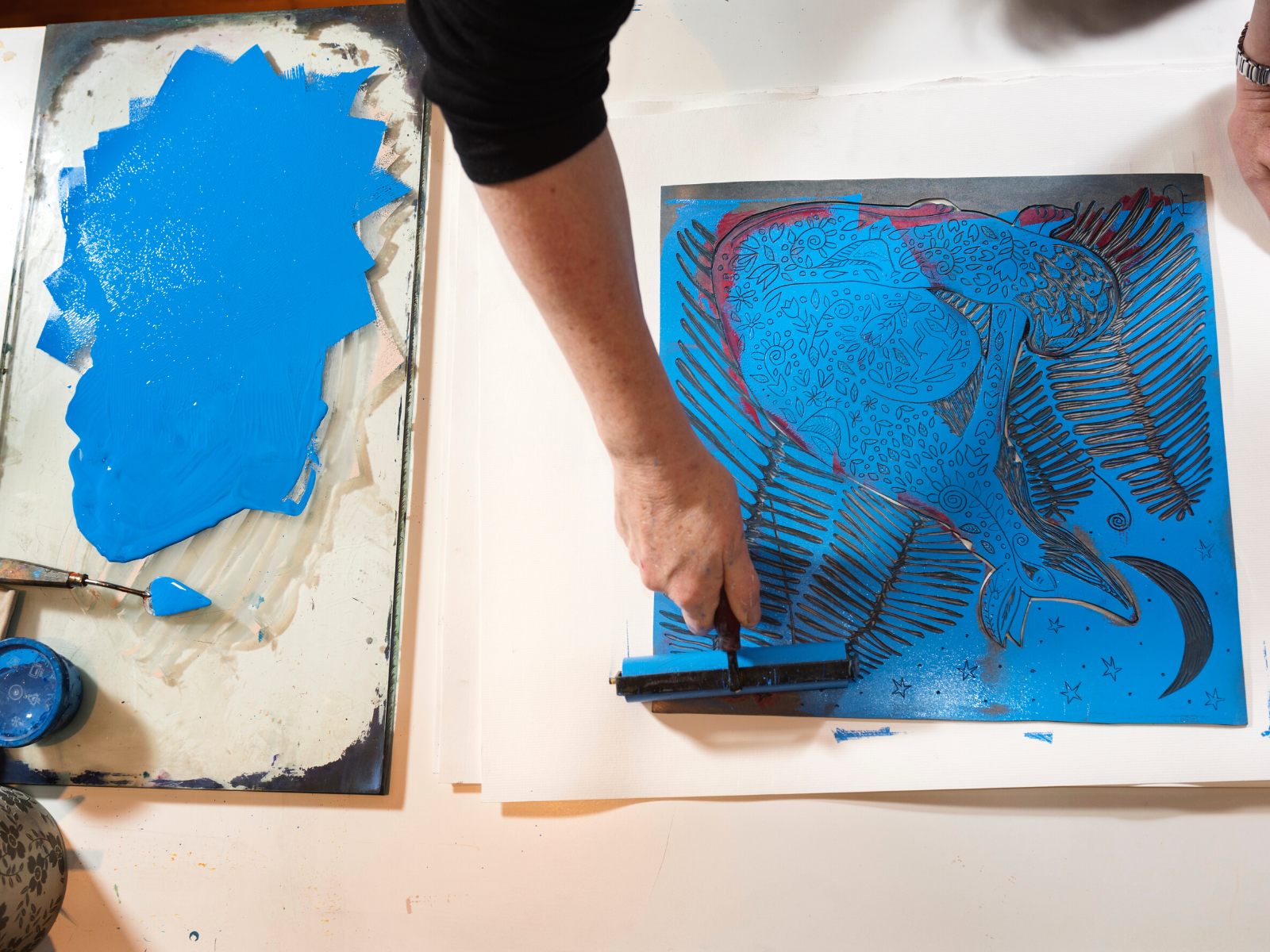

Printmaking FAQs
Printmaking is a fascinating and diverse art form that sparks many questions.
Here are some frequently asked questions to help you gain a better understanding of this medium.
Can printmaking be done at home, or does it require a professional studio?
Printmaking can be done at home with the right tools and materials. Some techniques, like linoleum block printing, require minimal equipment and can be easily practiced in a home setting. However, access to a professional studio or an etching press can expand the possibilities and scale of printmaking projects.
How many prints are typically in an edition?
The number of prints in an edition can vary widely depending on the artist's preference and the technique used. Some editions may have as few as ten prints, while others may have hundreds. The edition size is often determined by the artist and is indicated on each print along with its individual number in the series.
Are prints considered original artwork?
Yes, prints are considered original artwork. Each print is an original piece that has been manually created by the artist using the printmaking process. Even though multiple copies are made, each print is unique due to the nature of the process and the variations that can occur during printing.



Thinking about starting printmaking? Check out illukace's video!
Want even more content about creativity and art?
Be sure to check out all of our creative chronicles!
Eager to get creative with printmaking?
Check out some of our other articles:
-What are the 4 main types of printmaking?
-What is the hardest printmaking technique?

